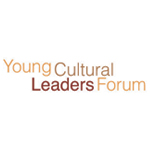 Editor’s Note: This is one of a series of posts from guest bloggers discussing topics from this week’s Salzburg Global Forum for Young Cultural Leaders. Leaders from around the world are coming together to discuss issues that are critically important to the cultural sector − how do we create and articulate our value, what is global and what is local today and what is the role of arts organizations in society.
Editor’s Note: This is one of a series of posts from guest bloggers discussing topics from this week’s Salzburg Global Forum for Young Cultural Leaders. Leaders from around the world are coming together to discuss issues that are critically important to the cultural sector − how do we create and articulate our value, what is global and what is local today and what is the role of arts organizations in society.
Museums today are visitor-oriented. We study our visitors, survey them, collect zip codes IP addresses, research demographics, tailor tours to state curriculum standards… We create interpretive experiences in multiple languages, for any number of age groups or visitor-types. We are desperate to discover and identify our visitor and their needs. Yet, somehow, we are still failing. Why?
Part of it is the growing diversity of our audience. Whether the visitor comes to us as a tourist, or the exhibition travels to them (in physical or virtual form), we are now in the business of translation. And translation requires more than simply offering the display in several languages. Content must be rethought with an eye for what we take as given, but is completely opaque to someone with a different set of experiences.
Take, for example, a photograph of a family preparing breakfast with fresh fruits, maple syrup, a stack of waffles and a waffle iron. To the average American, this requires little explanation, and one can run right into interpretation. Imagine though, if you were a visitor who had never had a waffle before. You would miss so many cues: that this is likely breakfast, that the mechanical gadget makes the odd lattice-patterned food, that the bowl of tan liquid is not soup but batter, and so on. Google Norman Rockwell and just browse through with an eye to how much they rely on these cultural cues: a police officer’s uniform, iconic diner stools, and more.
Museums have recognized and taken strides to address this. Exhibition text is altered before it travels or the Chinese language track on the audio tour includes a one-sentence history of the waffle. We know that we’re not quite hitting the mark, though, because visitors have multiple identities. Best example? In a museum, which offers tours in five languages, for families, or for seniors… which tour should a German family take? The family tour or the German one? When museums then mourn the lack of resources to create an extra five or ten tours, for senior Spaniards and Italian children, they are reinforcing this visitor demographic obsessed mindset, and locking themselves into inevitable failure.
Why? Because the new global/local proximity is not only changing which visitors we encounter, it is exercising change on the visitors themselves. The answer we are searching for in our visitor research no longer exists: Take Rachel, a visitor to a small college art museum in Vermont where she was accepted for graduate school.
Rachel currently teaches abroad in France, but is originally from Alaska. However, her most recent US address was in California, where she completed undergrad. Where is she from? What can we assume about her base knowledge, context, or needs?
As the general population becomes more migratory, the problem only magnifies. How many of us attend college outside of our own state? Study abroad? Visit friends who live in another country? Are first generation citizens raised between two cultures? Teach abroad after college? Our addresses, names, races, even ages no longer signify what we have learned or who we have learned it from. For myself, I outwardly look and sound American, having lived in this country on and off since the age of four. My formal education is largely American, down to the state history of Michigan, yet until I became a citizen at age 17, I declined to say the Pledge of Allegiance and my sister refused to check boxes that identified her race as “Caucasian American.” When I return to England, where I am a citizen, it is even more muddled: I know that Shrove Tuesday is pancake day but couldn’t find Leeds on a map to save my life. I could continue with scores of language barriers within a single language, but the point comes across. As visitors become increasingly global, our old concepts of demographics will become ever more obsolete. We are researching a problem without an answer.
So what is the solution? How can we be visitor-oriented when we cannot know our visitor?
Fortunately there are good models out there. We can learn from Wikipedia. Their page on Paul Klee is no different for an art historian than it is for a child. Visitors scaffold their experience as they need or wish to by browsing between articles. All links are equal: there is no path, which is fifth-grade or American, remedial or advanced. We can learn from why StumbleUpon was so successful by asking visitors to choose subjects of interest. How do the levels and demonstrated mastery mechanisms of a game play into this equation? The how is as of yet very much unknown. But it is clear that it must begin by reframing the question, understanding that the local/global shift has thrown our demographic categories out the window. After that, my money is on universal design.

Leave a Reply